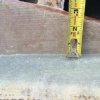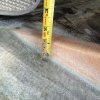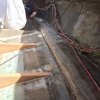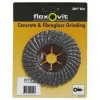progress goes very slowly when all of us are pulling in different directions .
As I understand boating web sites, if you post anything, it is subject to everyone's comments and opinions .
I've posted in here with photos and text on; house repairs, engines, boats, hulls, modifications, cars, trucks, and even politics .
Once I put it out there, it's all up for everyone to comment or whatever .
I don't claim to know everything, but what I have done, I do know, and it has always turned out to work well, or even better than new . Often I 'over-build', and I will cling to that as ONE of my personal FLAWS . IF you bring your boat to me, I'm in control . I'll answer ALL of your questions, but all the work will be done MY WAY, or leave . If I say "100 MPH" you can take that to the bank .
Posting on the net, asking for help is a good place to start, but this is where you need to find ONE shop, ONE person, ONE expert, and stick with just ONE . Mixing 10 opinions, and 10 methods will result in "1/10th" of a good job .
IMO, there are so many things that SHOULD be done BEFORE doing structural glass work (stringers, bulkheads, floors) on any 'scooped out' hull, that I cringe every time I read one of these project threads .
IMO, the professionals who do this kind of work at 'upper to middle of the road quality', are not charging enough, and yet some would still rather 'save money' and do it themselves .
OK, go ahead do it . Ask around the net, get a bunch of 'responses', dive in and SAVE MONEY .
But, just like getting a 'heart transplant in a strip mall Dr's office', a lot of the 'details' get overlooked .
Those boats 'ran good' because they were LIGHT, more unproductive weight, less performance .
The hull needs to be on a 'level surface/dolly/board fixture' . This must be LEVEL, so as to keep the hull/bottom, SQUARE . Do the inside structural and then FLIP it over and do the cosmetic (gel) and FIX the HOOK, in the riding surfaces . Sitting on it's own trailer, is just not adequate .
I want to HELP PEOPLE to learn how all this stuff has worked for me, you may disagree and that is OK too .
SURE, there are many methods to do most everything, but I don't give 'advise' on subjects that I have not done myself . I don't 'guess', should you agree with me or not .
There was a guy on here a few months ago who had a Tahiti I rebuilt in 1980 . (the same design as the Southwind here) It was a jet and I rebuilt it into an outboard with a 200 HP on a bracket . He bought the boat last year, with a 300 HP on it and it did NOT FALL APART . (over all those years) The paint and seats were done, but the structure held intact, even with the 'overpowering abuse' .
Powerboating CAN be a dangerous hobby, how you approach it, and how you respect it, will directly make a difference in how much fun or trouble you have doing it .
My feelings are not hurt, read my sig line below ..........
Appreciate all of the info. If I had known this project was going to snowball like it did, I would have seeked professional advise, but this was kind of like a slow motion train wreck. IF i had known there were structural design flaws that needed to be addressed, I would have seeked out professional advice, at that point, I could decide to drop the coin to fix an old relic, or find a bare hull and do a swap out? or who knows what other options.
But at this point, it's propped up in my driveway, and in pieces, so I need to carry on and fix it right myself. I did support the hull properly (or at least attempted to) before I glassed in the stringer...
Any advice on where I should go from here (bulk heads epoxied in, but not glassed) is much appreciated.
























